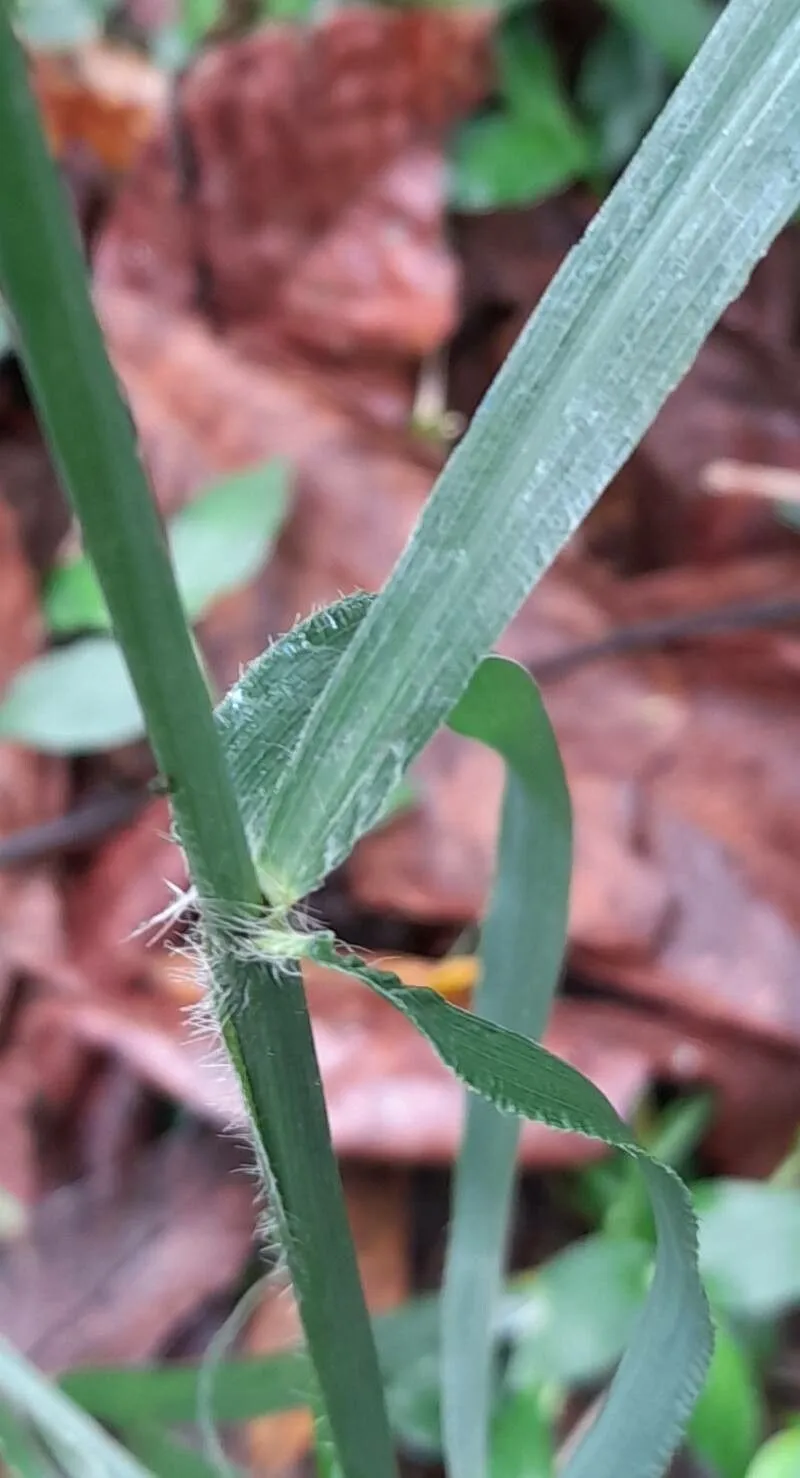
Author: L.
Bibliography: Syst. Nat. ed. 10. 2: 855 (1759)
Year: 1759
Status: accepted
Rank: species
Genus: Paspalum
Vegetable: Unknown
Observations: Mexico to Trop. America
Russell river grass, scientifically known as Paspalum paniculatum, is a notable member of the Poaceae family. First described in the 10th edition of “Systema Naturae” in 1759 by the renowned botanist Linnaeus, this grass species has captured the attention of botanists and ecologists alike due to its wide distribution and ecological significance.
Native to a vast range stretching from Mexico to tropical regions of the Americas, Paspalum paniculatum thrives in various habitats, showcasing its adaptability and resilience. This grass is often found in diverse environments, from lowland tropical regions to slightly elevated areas, displaying its capacity to flourish under different climatic and soil conditions.
The morphology of Russell river grass is characterized by its distinctive paniculate inflorescence, a feature that helps in its identification and classification. The grass’s vibrant green foliage forms dense clumps, contributing significantly to the ground cover in many tropical regions. This dense growth not only prevents soil erosion but also plays a crucial role in the local ecosystem by providing habitat and food for various fauna.
In addition to its ecological importance, Paspalum paniculatum holds potential for agricultural uses. Its robust nature makes it a suitable candidate for forage in tropical areas, where other grasses might not perform as well. Furthermore, ongoing studies continue to explore its potential uses in soil conservation and rehabilitation projects.
In summary, Russell river grass (Paspalum paniculatum) is a vital species within the Poaceae family, with significant ecological and potential agricultural value. Its widespread presence from Mexico to tropical America highlights its adaptability and importance in maintaining the health and stability of tropical ecosystems.
Eng: arrocillo, russell river grass, galmarra grass
Spa: arrocillo
Por: capim-vassoura
En: Russell River grass, Galmarra grass, Arrocillo
Fr: Paspalum paniculé, Herbe duvet, Spartine maritime
Pt: Grama-de-macaé, Capim-vassoura
Es: Arrocillo, Zacate Cabezón
Taken Jun 14, 2016 by OTS – Oviedo-Brenes, Federico (cc-by-nc-sa)
Taken Mar 19, 2022 by Gonçalves da Cunha Lucas (cc-by-sa)
Taken Jan 1, 1900 by EOL − Más & Lugo-Torres (cc-by-nc-sa)
Taken Jul 3, 2022 by Trap Hers (cc-by-sa)
Taken Jul 3, 2022 by Trap Hers (cc-by-sa)
Taken Nov 27, 2010 by Tela Botanica − Liliane Roubaudi (cc-by-sa)
Taken Jan 1, 1900 by EOL − Más & Lugo-Torres (cc-by-nc-sa)
Taken Apr 17, 2019 by OTS – J. González (cc-by-nc-sa)
Taken Apr 17, 2019 by OTS – J. González (cc-by-nc-sa)
Taken Jul 3, 2022 by Trap Hers (cc-by-sa)
© copyright of the Board of Trustees of the Royal Botanic Gardens, Kew.
© copyright of the Board of Trustees of the Royal Botanic Gardens, Kew.
© copyright of the Board of Trustees of the Royal Botanic Gardens, Kew.
Taken Oct 2, 2021 by Pegenaute i Ferri Isidre (cc-by-sa)
Taken Sep 24, 2022 by Backhaus (cc-by-sa)
Taken Sep 24, 2022 by Backhaus (cc-by-sa)
Taken Jan 20, 2022 by Jérôme Tirolien (cc-by-sa)
Taken Jul 22, 2019 by castro hernan (cc-by-sa)
Taken Jun 14, 2016 by OTS – Oviedo-Brenes, Federico (cc-by-nc-sa)
Taken Jun 14, 2016 by OTS – Oviedo-Brenes, Federico (cc-by-nc-sa)
Taken Jun 14, 2016 by OTS – Oviedo-Brenes, Federico (cc-by-nc-sa)
Taken Nov 27, 2010 by Tela Botanica − Liliane Roubaudi (cc-by-sa)
Taken Apr 17, 2019 by OTS – J. González (cc-by-nc-sa)
Taken Apr 17, 2019 by OTS – J. González (cc-by-nc-sa)
Taken Nov 27, 2010 by Tela Botanica − Liliane Roubaudi (cc-by-sa)
Taken Nov 27, 2010 by Tela Botanica − Liliane Roubaudi (cc-by-sa)
Taken Nov 27, 2010 by Tela Botanica − Liliane Roubaudi (cc-by-sa)
Taken Jan 1, 1900 by EOL − D. H. Lorence (cc-by-nc-sa)
Taken Nov 27, 2010 by Tela Botanica − Liliane Roubaudi (cc-by-sa)
Family: Myrtaceae Author: (F.Muell.) K.D.Hill & L.A.S.Johnson Bibliography: Telopea 6: 402 (1995) Year: 1995 Status:…
Family: Rubiaceae Author: Pierre ex A.Froehner Bibliography: Notizbl. Bot. Gart. Berlin-Dahlem 1: 237 (1897) Year:…
Family: Sapindaceae Author: Koidz. Bibliography: J. Coll. Sci. Imp. Univ. Tokyo 32(1): 38 (1911) Year:…
Family: Asteraceae Author: A.Gray Bibliography: Pacif. Railr. Rep.: 107 (1857) Year: 1857 Status: accepted Rank:…
Family: Fabaceae Author: Medik. Bibliography: Vorles. Churpfälz. Phys.-Ökon. Ges. 2: 398 (1787) Year: 1787 Status:…
Family: Aspleniaceae Author: (Cav.) Alston Bibliography: Bull. Misc. Inform. Kew 1932: 309 (1932) Year: 1932…